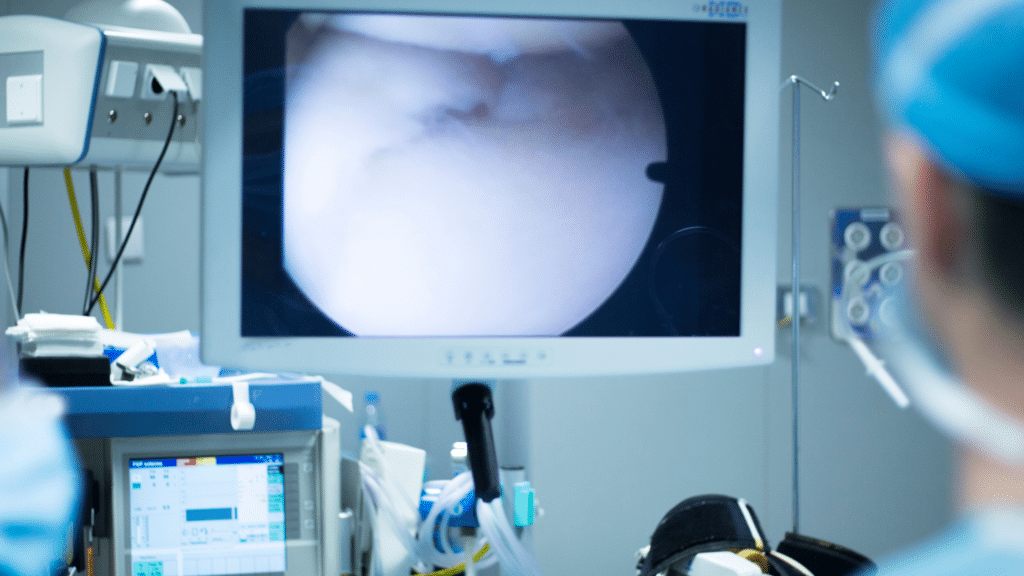Arthroscopic surgery, also known as arthroscopy, is a minimally invasive surgical procedure that is used to diagnose and treat various joint-related conditions. It involves the use of a tiny camera called an arthroscope, which is inserted into the joint through a small incision. This allows the surgeon to visualize the joint and perform necessary repairs without the need for large incisions. Arthroscopic surgery is commonly used to treat conditions in the knee, shoulder, wrist, ankle, and hip joints.
What is Arthroscopic Surgery?
Arthroscopic surgery is a surgical procedure that utilizes an arthroscope, a small camera, to visualize and treat joint-related conditions. The arthroscope is inserted into the joint through a small incision, allowing the surgeon to see the internal structures and perform necessary repairs. This minimally invasive approach offers several advantages over traditional open surgery, including smaller incisions, less tissue damage, reduced pain, and faster recovery times.
Benefits of Arthroscopic Surgery
There are several benefits to undergoing arthroscopic surgery. Firstly, the procedure is minimally invasive, which means smaller incisions and less tissue damage. This results in reduced pain, decreased risk of infection, and faster recovery times compared to traditional open surgery. Additionally, arthroscopic surgery allows for more precise diagnosis and treatment of joint conditions. The surgeon can visualize the joint in real-time, identify the problem, and perform necessary repairs, such as removing damaged tissue or repairing torn ligaments or tendons. This targeted approach often leads to improved outcomes and long-term joint function.
Common Conditions Treated
Arthroscopic surgery is commonly used to treat a variety of joint-related conditions. In the knee, it is frequently employed to repair torn meniscus, reconstruct torn ligaments (such as the anterior cruciate ligament or ACL), remove loose cartilage or bone fragments, and treat conditions like patellar instability or cartilage damage. In the shoulder, arthroscopy is utilized for rotator cuff repairs, labral repairs, treatment of shoulder impingement, and removal of inflamed tissue or bone spurs. Other joints, such as the wrist, ankle, and hip, can also benefit from arthroscopic surgery for conditions like carpal tunnel syndrome, ligament tears, and hip impingement, respectively.
The Procedure of Arthroscopic Surgery
The procedure of arthroscopic surgery typically begins with the administration of anesthesia to ensure the patient’s comfort. The surgeon then makes a small incision near the joint and inserts the arthroscope, which is connected to a video monitor. This allows the surgeon to visualize the joint’s internal structures and identify any abnormalities. Additional small incisions may be made to insert surgical instruments to perform necessary repairs. The surgeon may remove damaged tissue, repair ligaments or tendons, or address any other issues identified during the procedure. Once the repairs are completed, the incisions are closed, and the joint is bandaged. The entire procedure usually takes about an hour, depending on the complexity of the condition being treated.
Recovery and Rehabilitation
After arthroscopic surgery, a period of recovery and rehabilitation is essential to ensure optimal healing and restore joint function. The length and intensity of the recovery process may vary depending on the specific procedure performed and the patient’s overall health. In general, patients are advised to rest and elevate the operated joint, apply ice to reduce swelling, and take prescribed pain medications as needed. Physical therapy may also be recommended to restore strength, flexibility, and range of motion. The surgeon will provide specific post-operative instructions, including restrictions on activities, wound care, and follow-up appointments. It is important to follow these instructions diligently to achieve the best possible outcome.
Frequently Asked Questions
Q: Is arthroscopic surgery always the best option for joint conditions?
A: Arthroscopic surgery is not always the best option for every joint condition. The suitability of the procedure depends on various factors, including the specific condition, the severity of the problem, and the patient’s overall health. It is important to consult with a qualified orthopaedic surgeon to determine the most appropriate treatment approach.
Q: How long does it take to recover from arthroscopic surgery?
A: The recovery time after arthroscopic surgery can vary depending on the specific procedure and the patient’s individual circumstances. In general, most patients can expect to resume their normal activities within a few weeks to a few months. However, it is important to follow the surgeon’s post-operative instructions and attend any recommended physical therapy sessions to ensure a full recovery.
Q: Are there any risks or complications associated with arthroscopic surgery?
A: Like any surgical procedure, arthroscopic surgery carries some risks. These may include infection, bleeding, blood clots, damage to surrounding tissues, and adverse reactions to anesthesia. However, the overall risk of complications is relatively low. It is important to discuss any concerns or questions with the surgeon before proceeding with the procedure.
Conclusion
Arthroscopic surgery is a valuable tool in the diagnosis and treatment of joint-related conditions. Its minimally invasive nature offers several benefits, including smaller incisions, less tissue damage, reduced pain, and faster recovery times. From knee and shoulder injuries to wrist and ankle conditions, arthroscopic surgery can effectively address a wide range of joint problems. However, it is important to consult with a qualified orthopaedic surgeon to determine the most appropriate treatment approach for each individual case. By understanding the benefits and procedure of arthroscopic surgery, patients can make informed decisions about their joint health and pursue the best course of treatment.

